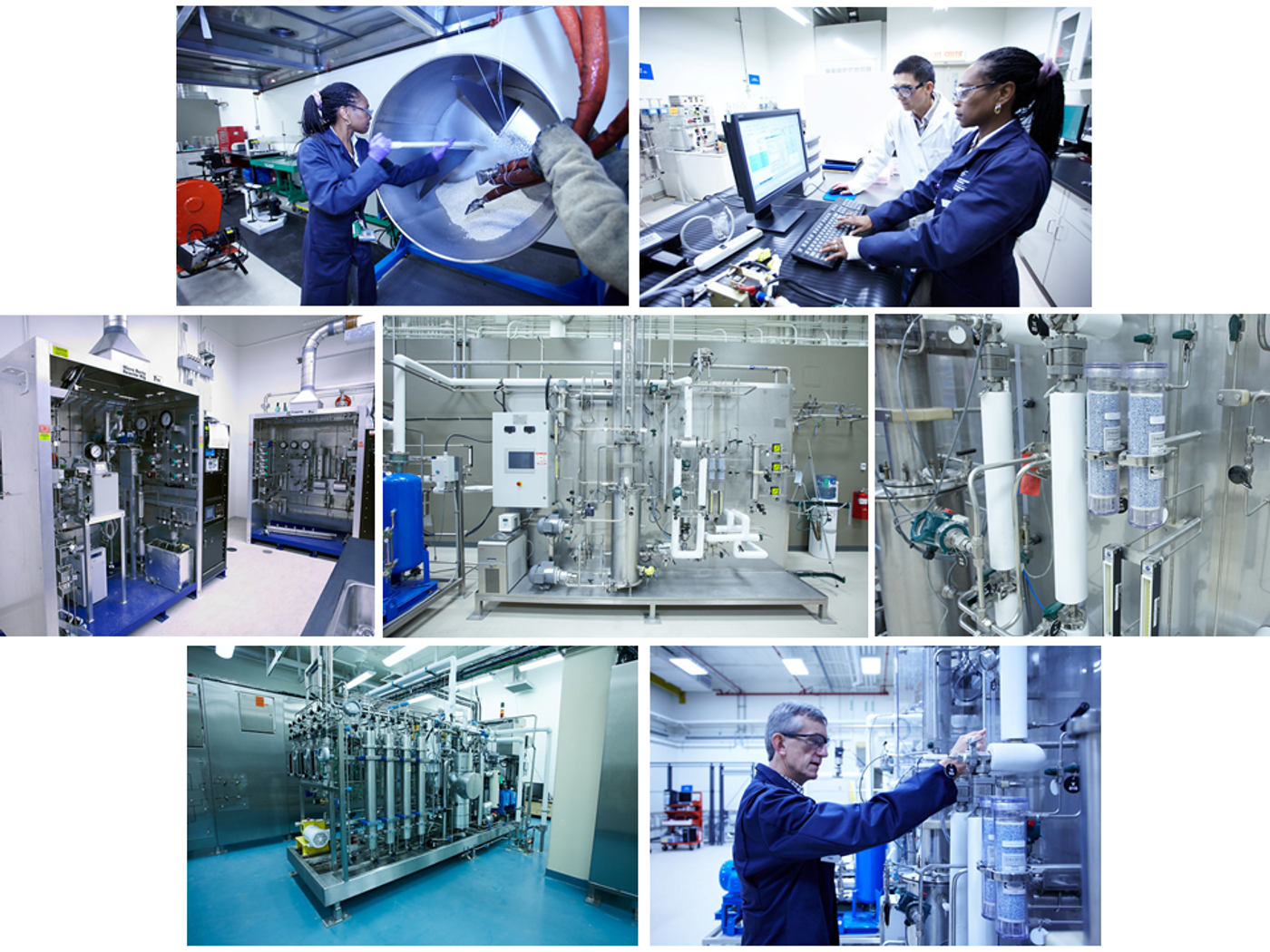Hydrogen, the Element of Our Energy Future? (Part II)
According to the International Energy Agency, the worldwide hydrogen market is expected to reach over $150 billion US by the year 2022 under the current rate of growth. The expanded hydrogen use would see an immediate benefit in multiple fields where hydrogen plays or will assume a vital role: aerospace, agriculture, manufacturing, and transportation.
Why hydrogen is becoming a big deal, part one | Sustainable Energy (CNBC)
As discussed in Part I of the article, even with the tremendous momentum behind the its expansion, there are still substantial barriers for hydrogen fuel to gain the “mainstream” status, one being the heavy reliance on fossil fuel for its production.
A long-time pioneer in nuclear science and technology, the Canadian Nuclear Laboratories (CNL) has been working on developing an integrated copper-chloride (Cu–Cl) cycle, an innovative thermochemical mechanism, ultimately for the large scale production of hydrogen for industrial applications.
The Cu–Cl cycle is a four-step water-splitting process that combines thermochemical and electrolysis reactions. This much sought-after mechanism, which enables expanded production of hydrogen without release CO2, can be operated alongside nuclear power plants or other sustainable energy to achieve hydrogen production with superior efficiency and minimum environmental impacts.
While there are a number of technologies that employs the Cu–Cl cycle currently used in hydrogen production, CNL’s proprietary technology–known as the HCuTECTM process–has a number of environmental and economic advantages over these other techniques. In particular, when using a clean source of power (such as hydroelectric or nuclear power) in conjunction with waste heat from existing industrial processes, HCuTECTM holds the potential to be a cost-effective, and environmentally responsible option for large scale hydrogen production.
CNL is also examining the potential to pair the HCuTECTM process with other clean energy sources, such as small modular reactors (SMR).
“People think of nuclear power for electricity production, but there are many other applications. SMRs in particular, due to the range of sizes and coolant temperatures under consideration, can be used for many other applications.” explained Dr. Kathryn McCarthy, CNL’s Vice-President of Science and Technology. “That’s what makes the HCuTECTM process so appealing. When you pair it with an SMR, for example, you can produce two forms of clean energy while avoiding the production of greenhouse gases entirely.”
But just like the fuel cell is one single (but critical) part of a hydrogen-powered vehicle, a hydrogen economy means much more than just the "green" production process.
Aside from their advanced hydrogen co-production technology, the Canadian Nuclear Laboratories is also a recognized world leader in hydrogen safety and energy storage technologies.
Recently added to their hydrogen research portfolio is the Hydrogen Isotopes Technology Laboratory, a state-of-the-art facility that allows scientists there tackle existing issues with the production, consumption, storage, distribution, and release of hydrogen energy. Hydrogen is known for its explosiveness and flammability when mixed with the air. The properly constructed and ventilated facility allows CNL scientists conduct research safely in a laboratory setting.
Hydrogen storage, for instance, is among many prominent challenges scientists and engineers are facing. Hydrogen can be stored in either gas or liquid form. Compressed hydrogen gas is usually stored in high-pressure vessels at 350 bar (5,000 psi) or 700 bar (10,000 psi). The liquid storage method requires the gas to be brought to its critical pressure and then cooled down to temperatures below 33 Kelvin (K). Once liquefied, hydrogen can be stored and transported in thermally insulated conduits and containers. However, pressure-tolerating vessels are costly to build and are subject to breaches. The leakage of hydrogen can spur fire and explosion hazards.
The chemical storage of hydrogen can solve a lot of the existing problems. Because in this method, hydrogen molecules are chemically bonded with the storage material, thus they can be stored at a higher density and require less space. Moreover, there's much less chance for it to leak out of the container and cause a fire.
But to achieve their goal, researchers have to go over a few roadblocks.
"The chemical process of storing hydrogen is tricky, as it needs to consider the reaction kinetics. If the H2 gas gets absorbed (into a material) easily, it is likely to leave readily, which means the storage method is not stable. Alternatively, if it takes a long time and a lot of energy to make H2 chemically bonded with a material, it would require the same amount of efforts for it to detach, which make the storage method costly and time-consuming," said Gordon Burton, Manager of Hydrogen Program.
Scientists at CNL are developing novel catalysts that can speed up the reactions to get hydrogen molecules bonded with the storage material and to remove them.
As they continue to make progress, the CNL's hydrogen research group is confident that their work will lead to a storage solution that could revolutionize how the hydrogen fuel is kept and transported.
To meet the Paris climate targets governments and industries agree that ambitious decarbonization actions across all sectors are urgently needed, and hydrogen fuel, among many instrumental sustainable sources, can help us to achieve a clean and affordable energy future. With many research institutions like the Canadian Nuclear Laboratories joining the quest to further develop hydrogen technologies, it is clear that hydrogen is on the path to becoming the energy of the future.
Source: CNL
[This article contains LabRoots original contents]









